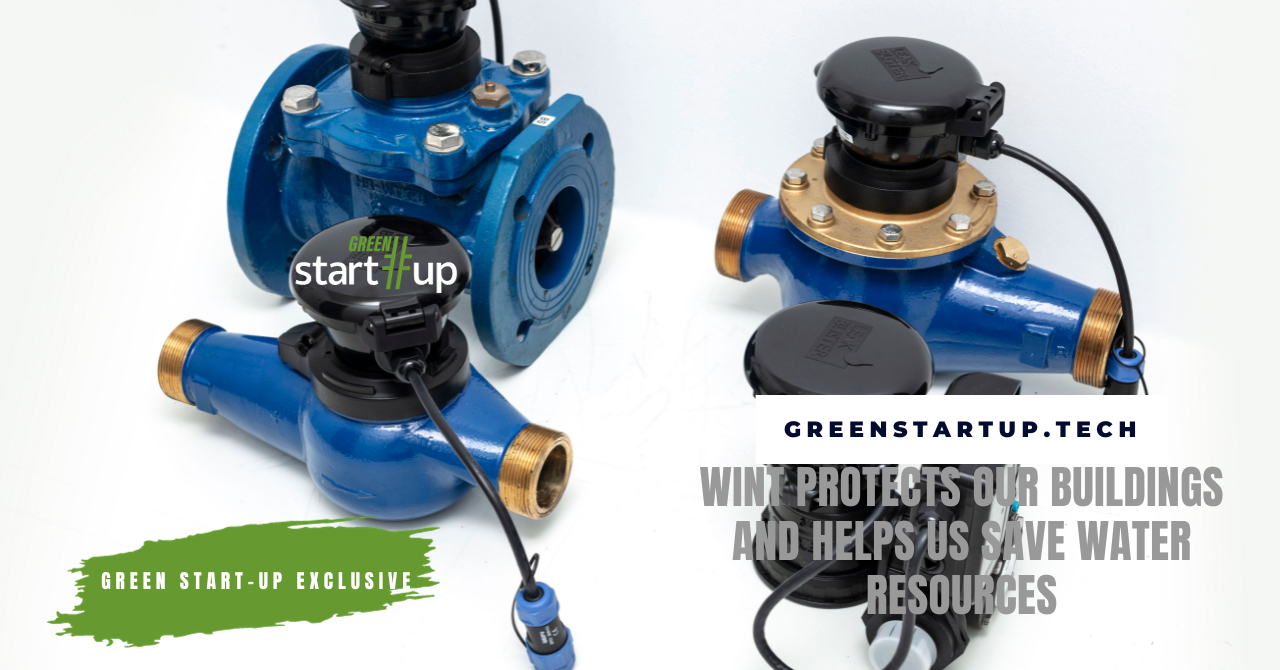So far, besides the 35 million USD round in August, WINT had two other financing rounds, worth 10 and 15 million USD, respectively, bringing the total investments to 60 million USD.
WINT water management systems are able to detect and stop leaks at the source using Artificial Intelligence. It can also alert the operators when water is leaking and can automatically shut it off to prevent further wasting resources. The real-time monitoring system identifies the sources of leaks and waste mitigating damage, reducing consumption and cutting the resulting carbon emissions.
WINT was founded back in 2018 by Alon Geva and Yaron Dycian, as a way to help companies maintain safer buildings from a structural stand-point, but also to help reduce the amount of water wasted through leaks. We had a chat with Yaron, Chief Strategy Officer at WINT, to find out more about how the systems actually work and why they should be implemented in any building in order to extend its lifespan.
Yaron has a vast experience in building startups, having done that for around 30 years, while also working as an Executive VP at IBM and on cyber security. At the same time, he told us that Alon has its own experience in delivering networking solutions, but also other innovative solutions, to the US market.
Why optimizing the water flow is crucial for a building
Looking to build a new company, Yaron was having his house renovated when the contractor that he worked with kept telling him about water leaks posed an issue to his customers, but also to the buildings that he was construction.
At the same time, Yaron's neighbor had a devastating incident which left him with a broken-up house due to a small water leak that went unnoticed for a few weeks.
"That was back in 2018, sustainability, global warming, climate change was just coming in and I thought that this is going to be big, so that combination turned the lightbulb on and then the idea came to us do create that company", Yaron told us.
The technology used by WINT is an anomaly-detection technology that works by analyzing the water flow within the pipes of a building and the flow chart. "If you think about water flow rate, let's say 100 liters per hour, over time you will see if I turn on the tap, you will see water starting to run and the chart will go up and when I shut off the tap, it will go down", Yaron explained for Green Start-Up.

That is the data resource that the company's system needs to assess water flow and if there is an anomaly going on within the pipes. But how can it tell if there's an issue going on or if the water flow went up due to a specific situation or a process?
That's the challenge when it comes to developing the system, as Yaron told us, and the trick to overcome it is by optimizing the detection in order to assess as many conditions as possible.
"There's never 100%, there will be miss detections, but the trick is to minimize them to the bare minimum and to prevent false alerts", we've been told.
The way WINT minimizes false alerts and is able to detect the real leaks, is with the help of artificial intelligence and machine-learning algorithms, which learn water-usage patterns over time so that when people may be using more water on purpose, the system won't automatically get triggered.
A solution available for businesses and apartment buildings
WINT was first available for consumers, before hitting larger market potential, we learned from Yaron. However, company officials decided that it was best if the solution was made available to businesses and corporate customers, as well as to large, multi-tenant buildings, such as an apartment building.
"It's important to say, we do two things: one is saving water, the other is preventing damage. A pipe exploding in a building can cause phenomenal damage, I've seen damages of up to 100 million dollars, for instance", Green Start-Up learned from WINT's Chief Strategy Officer.

Since no building in the world is perfectly protected from water leaks, WINT's solutions are very useful and can save a good amount on water usage, but also protect the structure itself. According to Yaron, the typical numbers company experts see when looking at savings are about a 25% reduction in water usage, but there have been situations when the system was able to save 70% of the water that would have just vanished.
How difficult can it be to optimize existing buildings
Sometimes, retrofitting old buildings with modern solutions can be a hassle, both from a cost perspective, as well as a technical one. However, this is not the case for WINT.
"I will start by saying that most of our customers are existing buildings and they have retrofitted solutions implemented. To install the solution, it's not a big deal, a plumber comes in, installs a meter and a valve and that is pretty much it", Yaron told Green Start-Up.
Because it's pretty much basic plumber work, it just depends on how large the building is, as this will obviously require more meters and more valves to be installed in order to detect potential leaks. When it comes to how expensive it is to implement this solution, as an example for a five-floor building, it would cost about 3.000 USD, give or take, meaning that it's not a very expensive way to protect your building in the long-term, while also cutting on water usage costs.
As far as the short and long-term plans are concerned, with a well-established team and solution available for the market, WINT is now targeting an expansion of the market, as well as continuing to serve its current customers.
 Mihai - Cristian Ioniță
Mihai - Cristian Ioniță












Any thoughts?